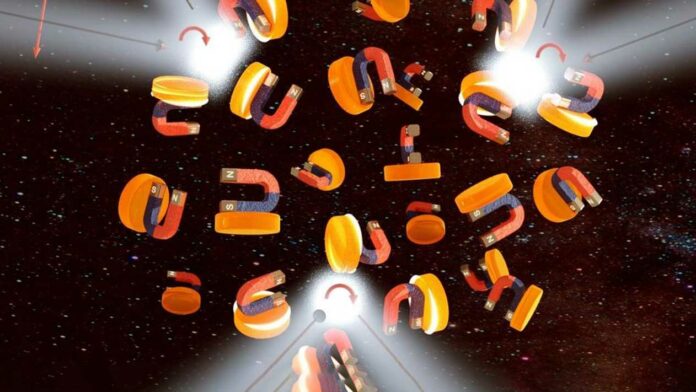The nonreciprocal magnetoelectric effect, known as the Tellegen effect, promises several groundbreaking phenomena connected to fundamental and applied physics. Scientists have proposed a three-dimensional metamaterial with an isotropic and resonant Tellegen response in the visible frequency range.
Theoretically, scientists at the University of Gothenburg‘s Department of Physics, in collaboration with Aalto University in Finland, the University of Pennsylvania in the United States, and Stanford University in the United States, have suggested manufacturing a kind of metamaterial that is not achievable with existing technology.
Unlike natural materials, metamaterials can be engineered to have particular characteristics, enabling scientists to produce materials with unique characteristics. This creates opportunities for developing materials with distinctive properties suited to a range of applications.
This novel metamaterial uses the Tellegen effect, sometimes called the nonreciprocal magnetoelectric (NME) effect. This phenomenon allows distinct electromagnetic wave components to be linked to specific material properties such as magnetization and optical polarization. Although the NME effect in natural materials is negligible, because of its enormous technological potential, scientists have been working to augment it with metamaterials.
Professor and Head of the Department of Physics, Alexandre Dmitriev said, “Tellegen effect and Tellegen materials have been theoretically proposed more than 70 years ago, but so far didn’t have any realistic applications. Most of the proposed Tellegen materials work in the microwave regime, so moving the effect into the visible spectral range was so far an insurmountable challenge.”
“We solve this by proposing a designer material built on the metamaterials principles—i.e., not from regular atoms, but from meta-atoms that are much larger units of matter and can have very specific properties on demand. Crucially, we propose a very simple design that can be rather straightforwardly realized with currently available fabrication methods, bringing a practical Tellegen material working with visible light within reach.”
The new material opens up exciting applications, such as making a real one-way glass that would otherwise require a strong external magnetic field to function. Presently available “one-way” glass is only partially transparent, allowing light to pass through in both directions. It functions as one-way glass only when brightness is different between the two sides (such as inside and outside a window).
But since light could only pass via one direction in a Tellegen material-one-way glass, there would be no need for a variation in brightness. In actuality, it refers to entirely opaque glass when viewed from one side and fully transparent from the other. This may significantly affect solar cells, lasers, and other privacy-related applications.
“Another truly fascinating aspect of the Tellegen metamaterial is that it is described essentially by the same electromagnetic equations that describe the cosmic dark matter and its constituent – an axion. This means that the experiments with visible light and Tellegen material can reveal something fundamental about how the Universe works,” says Alexandre Dmitriev.
Journal Reference:
- Safaei Jazi, S., Faniayeu, I., Cichelero, R. et al. Optical Tellegen metamaterial with spontaneous magnetization. Nat Commun 15, 1293 (2024). DOI: 10.1038/s41467-024-45225-y
